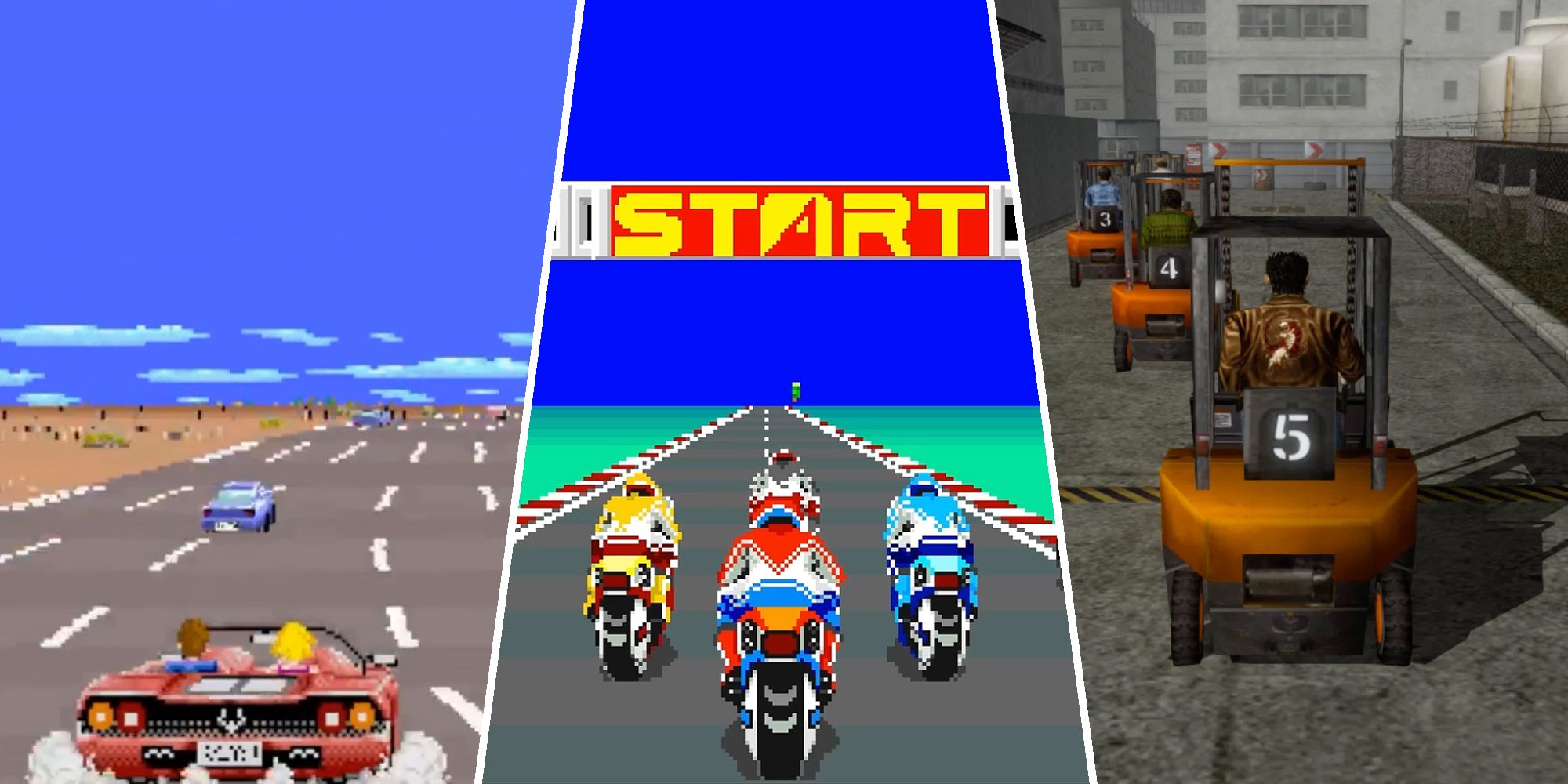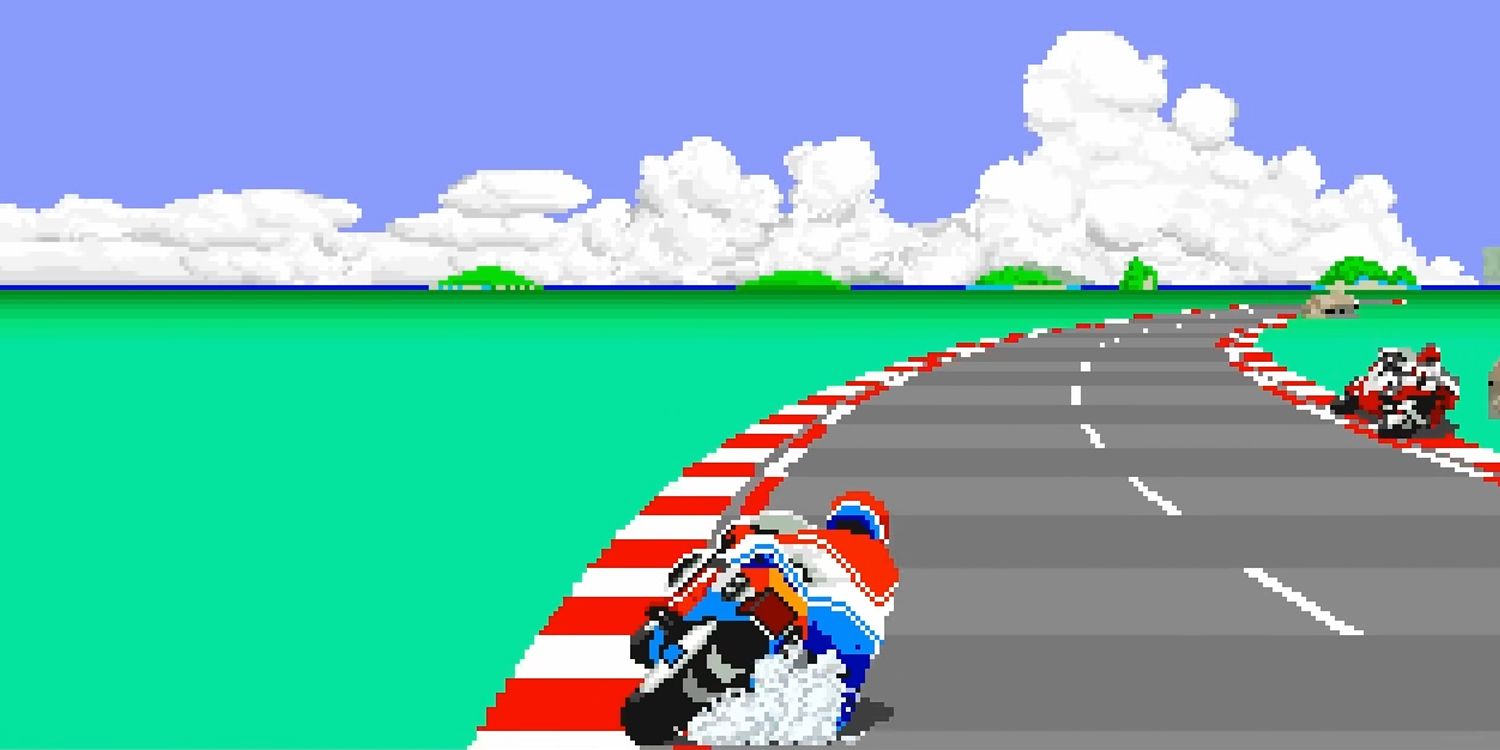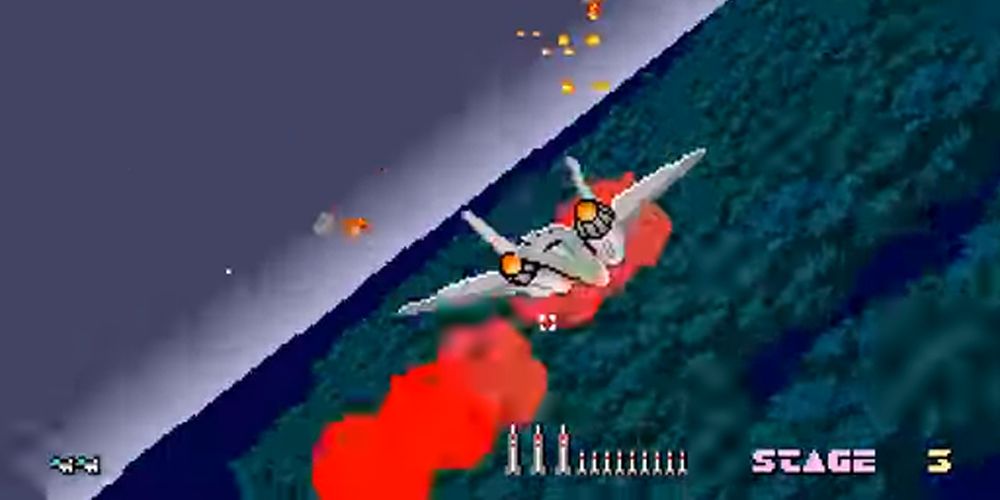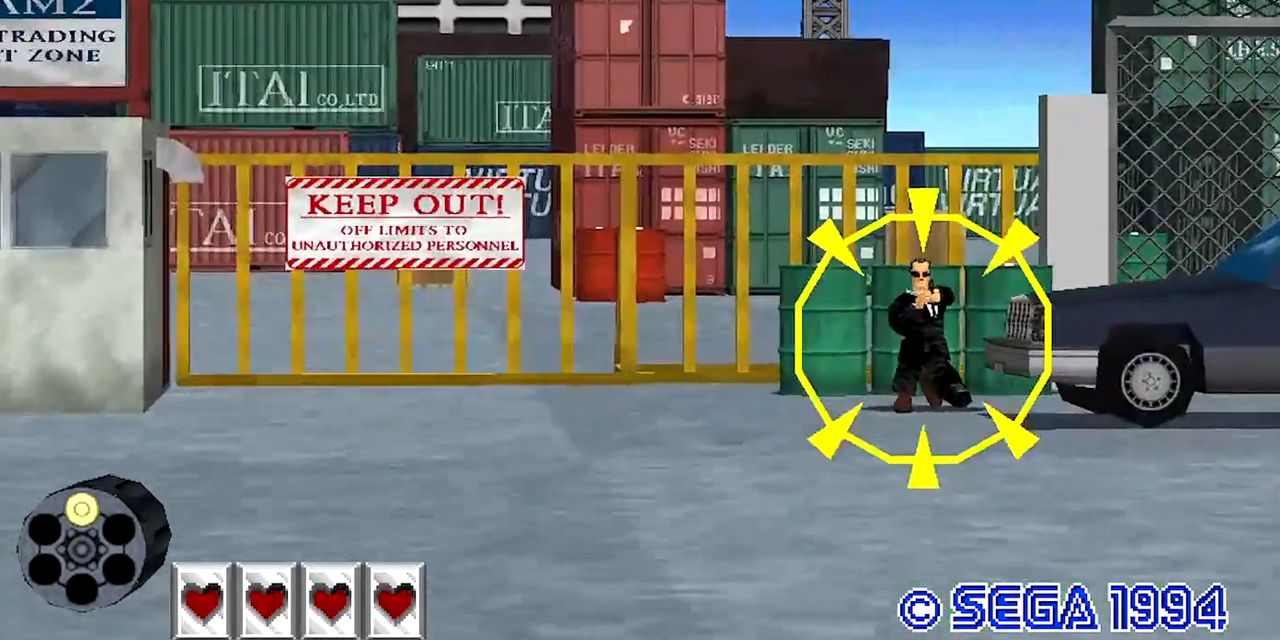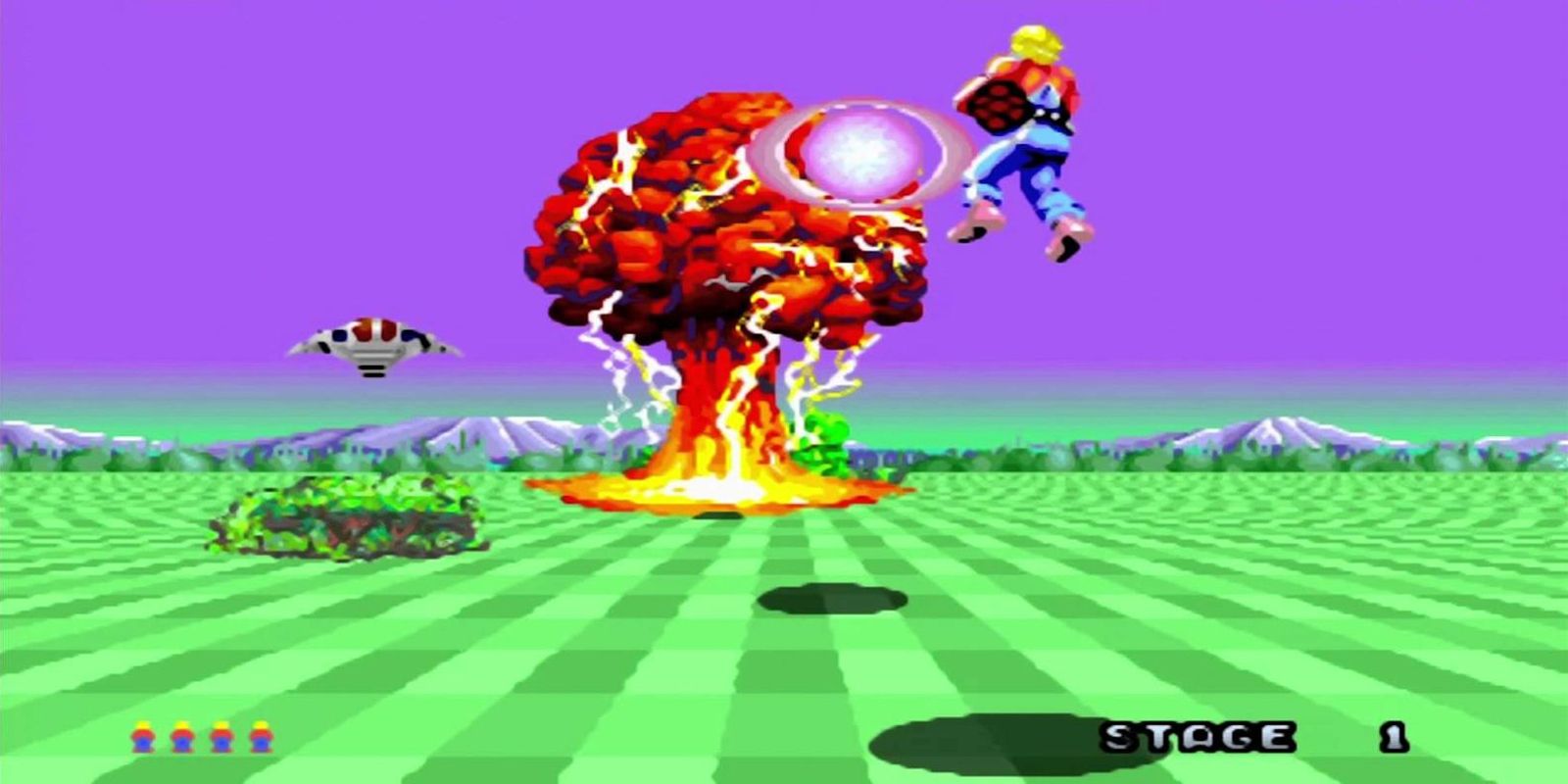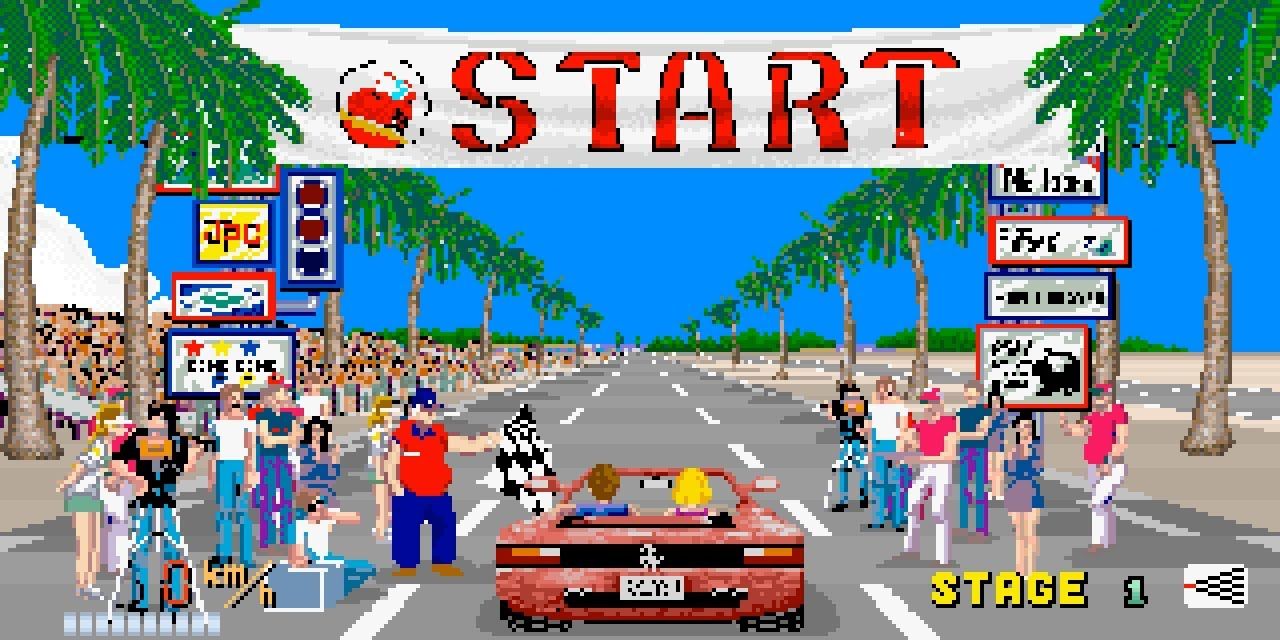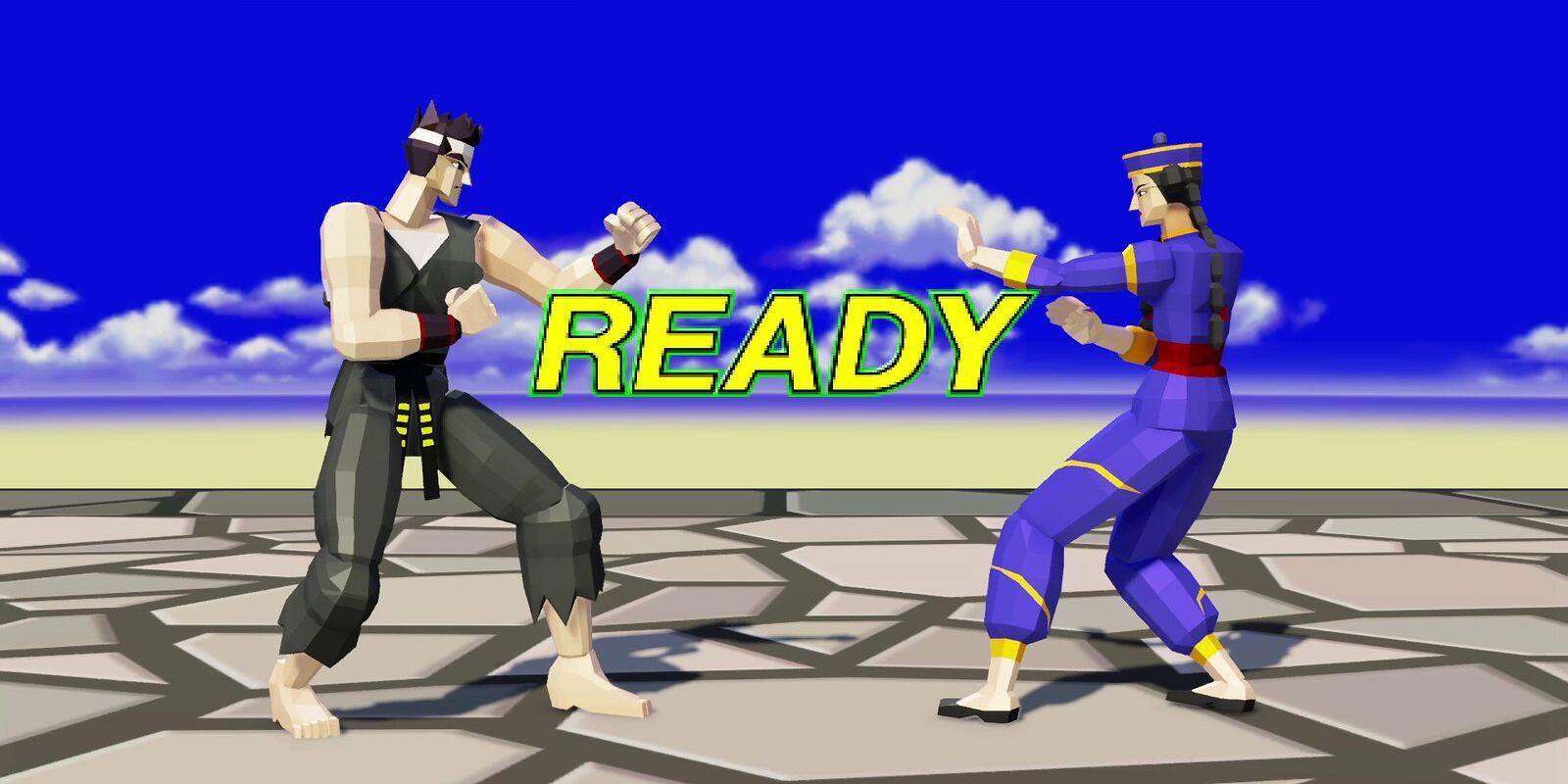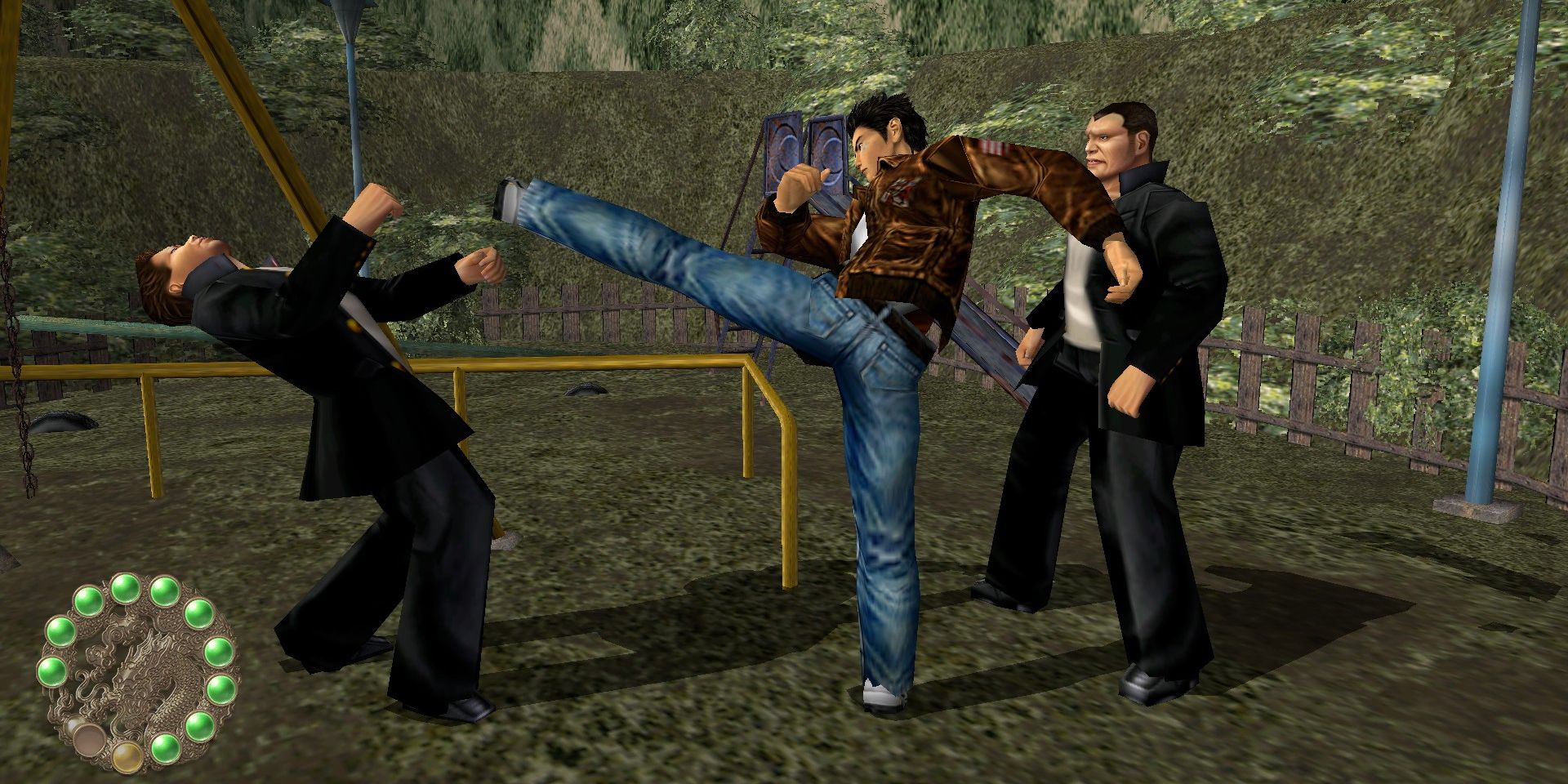Few video game developers, if any, have had quite as big an impact on the gaming industry as Yu Suzuki. Throughout his illustrious career, the Japanese visionary has developed a plethora of innovative and cutting-edge titles, many of which went on to play a pivotal role in shaping their respective genres. His really is an impressive and exciting journey, and one which is punctuated by countless ingenious ideas and groundbreaking games.
Born in the summer of 1958, Yu Suzuki began working at Sega in his mid-twenties, having initially trained to become an engineer. Despite this somewhat drastic change in occupation though, he quickly made a name for himself with a whole host of hugely successful arcade games before eventually sinking his teeth into the lucrative and fast-growing home console market. He's developed countless classics in the decades since, the best of which can be found below.
7 Hang-On
Hang-On was only the second game that Yu Suzuki designed for Sega, yet it's arguably one of his most well-known. The fast-paced arcade racer was among the very first arcade games to use 16-bit graphics thanks to the power of the Super Scaler arcade board, which Suzuki himself had a hand in designing.
Many attribute the popularity of taiken arcade games during the mid-to-late-eighties to the success of Hang-On, which ended up being the highest-grossing arcade game in the United States for two straight years following its release in 1985. It was subsequently ported to the Sega Master System and has received several sequels in the years since.
6 After Burner
Inspired by the sky-rocketing success of Top Gun in 1986, Suzuki quickly set about designing his very own fighter jet game. The resulting title was After Burner, which put players into the cockpit of an F-14 Tomcat. Like many of his previous games, After Burner's cabinet was designed entirely around the game itself and made use of hydraulics to simulate motion.
Thanks to the increased capabilities of the Sega X arcade board, which built upon the foundations laid by the original Super Scaler board, Suzuki was able to implement rotating sprites, making After Burner one of the very first games to boast this feature. Its fast pacing and unmatchable realism helped to make the game a huge success, with a sequel and a whole host of imitators soon following.
5 Virtua Cop
During his first ten years at Sega, Yu Suzuki served as the producer or director on no fewer than 22 titles, most of which were incredibly successful in arcades all over the world. Suzuki's 23rd game for the company was Virtua Cop, which, once again, helped to push the boundaries of what many considered to be possible in video games.
Granted, it might not look like much by today's standards, but Virtua Cop was groundbreaking for its era. It was one of the very first action games to use real-time 3D graphics together with texture mapping; something that would eventually become standard for future 3D games. It had a huge influence on subsequent light gun games too, including the likes of Time Crisis and The House of the Dead.
4 Space Harrier
Though nowhere near as revolutionary as some of the other great Yu Suzuki games, Space Harrier is arguably one of his most enjoyable titles. The third-person rail shooter first hit arcades back in 1985 and was only the third title that Suzuki had developed for Sega. Despite this perceived lack of experience though, it was still one of the most successful arcade games of 1986 and has since been ported to countless other systems.
Rather than putting players inside a vehicle like many of Suzuki's other arcade classics, Space Harrier simply provides them with a joystick-controlled jetpack and then lets them go to town. Interestingly, Suzuki had initially wanted to develop Space Harrier as a fighter jet game, though ended up settling for the jet-propelled alternative due to hardware limitations at the time.
3 Out Run
At a glance, Out Run may seem like an incredibly simple game, but there's an awful lot going on under the hood. As well as its then-revolutionary hardware and graphics, the game also helped to pioneer non-linear gameplay, with players able to reach five different destinations depending on the route that they chose to take.
Despite only having ten months and a small development team at his disposal, Suzuki was once again able to deliver a masterpiece, with Out Run going on to become the highest-grossing arcade game of 1987 and the eighth-most successful of all time. Countless racing game developers have since cited Out Run as having been one of their biggest inspirations, while the game's iconic soundtrack also helped to popularize the synthwave genre of music.
2 Virtua Fighter
For many modern gamers, Yu Suzuki's impact on the gaming landscape may not appear all that obvious at first glance. However, when one looks a little closer, his influence on the industry is actually fairly easy to see, particularly when it comes to the fighting game genre. Prior to Virtua Fighter, fighting games were stuck in the second dimension, though that all changed in 1993 thanks to Suzuki and his talented team.
Many consider Virtua Fighter to be the most influential fighting game of all time, and it's easy to see why. Granted, the blocky graphics haven't aged all that well, but, when compared with what everybody else was doing in the early nineties, this arcade classic was years ahead of its time. For the sequel, Suzuki would even secure a deal to use military-grade processors in the game's arcade cabinets; further cementing Virtua Fighter's place as the best 3D fighting game series of the early-to-mid-nineties.
1 Shenmue
There really isn't all that much to choose from when comparing Virtua Fighter and Shenmue, with both franchises having helped to shape and define their respective genres. However, the latter just about edges it on account of it having laid much of the groundwork for future open-world games. In fact, many of the elements pioneered by the series are still to become standard, such as adaptive difficulty, real-world weather conditions, and fully-voiced NPCs with their own daily schedules.
At the time of its release, Shenmue was one of the most expensive games ever made and this was very much reflected in its quality. The game's visuals were cutting-edge for the era, whilst the level of detail that went into crafting its Yokosuka setting went well beyond typical video game world-building. Not everybody was a fan of its slow pacing, though, for the most part, even those who disliked the game could still appreciate its unquestionable quality and innovative ideas.

